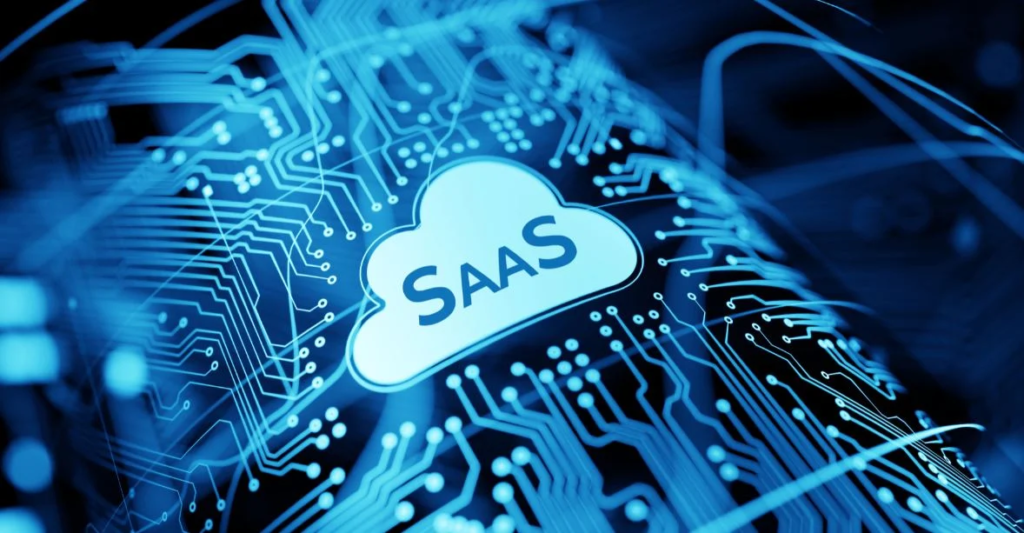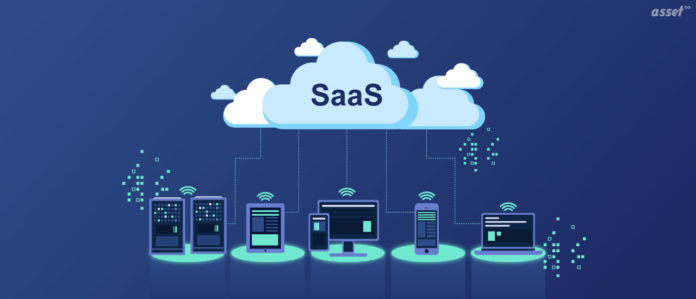SaaS (Software as a Service) is a software delivery model in which a platform is made available online. Access is via a browser or a special client without installing it on your computer or server.
SaaS typically operate in a cloud environment, which means they can scale and be accessed from anywhere in the world with a connection. This model is very popular among businesses because it makes it easier to manage software, requires little investment in infrastructure, and allows for faster deployment.

Operating Principles of SaaS
SaaS development services operate based on several key principles that govern their overall approach to software development and delivery. Here are some of the key operating principles of SaaS development services:
- Data storage and management: the vendor stores and manages all data on its servers. Data can be accessed via using any device connected to the network.
- Authorization and authentication: The service provides secure access to the system using authentication methods such as passwords or two-factor authentication.
- User interface: access through a browser or client. The interface is usually designed to be user-friendly and understandable.
- Updates: the platform is responsible for updating and maintaining the software. Updates are usually performed automatically, allowing the latest version to be used.
- Support: the project usually provides support to users via email, phone, or chat. Support can include help with configuration, troubleshooting, and technical support.
- Payment: The system may offer plans that include various features and options. Users usually pay by subscription.
By following these principles, SaaS development services can deliver software applications and services that are highly accessible, scalable, and secure, providing businesses with a cost-effective and efficient way to meet their software development needs.
Popular examples of SaaS systems
There are many examples of projects that are used in a variety of industries and activities. Some of the most popular examples include:
- Microsoft Office 365 – a popular software package that includes document applications, email, video conferencing, and other features.
- Salesforce – customer relationship management, which allows you to manage sales, marketing, analytics and other functions.
- Dropbox – Cloud storage that lets you store, sync, and share files.
- Google Apps – includes email, calendar, documents, presentations, etc.
- HubSpot – Marketing, sales and customer service platform that allows you to manage content, create web pages, forms and reports.
- Zoom – Video conferencing. Allows for online meetings and messaging.
These and other projects allow you to access a wide range of features and functionality, without having to install software on your computer or server.
Advantages and Disadvantages
Software as a Service is a software delivery model that has become increasingly popular in recent years due to its numerous advantages. However, like any other technology or business model, SaaS also has its disadvantages. Here are some of the main advantages and disadvantages of SaaS:
Advantages:
- Low implementation costs: no need to buy and maintain your own hardware and software.
- Flexibility: it is easy to scale according to business needs, without wasting time and resources on buying and configuring additional hardware.
- Fast access: can be accessed almost instantly, allowing you to get up and running as soon as you sign up.
- Always up-to-date: Vendors upgrade and maintain software to make sure the latest versions are always available.
- Convenience and mobility: can be run through a browser or smartphone, allowing for easy access.
Disadvantages:
- Vendor dependency: you are dependent on the vendor to access your data.
- Security: Users must trust the project to store and process their sensitive information.
- Lack of control: limited control over settings and configuration.
- Availability: accessibility and performance issues in case of problems with the vendor’s network or servers.
- Pricing: long-term use can become more expensive than buying and maintaining your own hardware and software.
Despite some drawbacks, SaaS is still popular because of its flexibility, availability, and convenience.
Differences from IaaS and PaaS
SaaS, IaaS and PaaS are three main cloud models that differ in what services they provide and to whom they are intended.
- SaaS provides out-of-the-box applications. In doing so, the provider is responsible for storage, updates, and security.
- IaaS provides access to infrastructure such as servers, storage, networks, and other resources that can be used to deploy and run. IaaS is suitable for managing while providing greater flexibility and scalability.
- PaaS provides tools to develop, test, deploy, and manage. PaaS allows developers to build their projects using the platforms and tools provided, and grow faster.
Can moving away from an on-premises system improve employee efficiency?
Yes, such a transition can improve employee efficiency in several ways. First, they typically work through Web browsers, which allows employees to have access from anywhere in the world that has access. This means that employees can work from home, on the road, or anywhere else, allowing them to be more flexible and efficient.
Services usually don’t require installation and updates on every employee’s computer, which greatly reduces administration and support costs. Instead, updates are performed centrally on the vendor side, allowing employees to have access to the latest version without having to install updates on their computers.
They often have powerful features that allow employees to easily collaborate, share information and manage projects. For example, services are available for employees to store and share documents, collaborate on projects, and schedule tasks.
Despite all the benefits, migrating from an on-premises system can also present some challenges, such as reliability and security, the need for a stable and high-speed connection, and the risk of data loss if the provider fails. Therefore, when deciding to migrate, it is necessary to carefully analyze all benefits and risks and choose the most suitable provider, considering the company’s needs and security requirements.

What is the relevance of SaaS at the moment?
At the moment SaaS is one of the most relevant approaches in the field of information technology, due to its flexibility, scalability, and reliability. With the increasing complexity and diversity of business processes, SaaS is becoming an increasingly popular solution for enterprises of all sizes and industries.
One of the main reasons for relevance is flexibility and cost-effectiveness. Enterprises can quickly and easily scale their applications and infrastructure according to changing needs, allowing them to be more adaptive to market conditions and use their resources more efficiently.
It is also a significant tool for improving collaboration and cooperation between different teams and departments, as well as for improving data security and protection.
One of the future trends is an increase in the volume of data and the ability to analyze it. Thanks to machine learning and artificial intelligence capabilities, systems will be able to process and analyze huge amounts of data, which will enable companies to make strategic decisions quickly and efficiently and improve their business processes.
We can also expect SaaS to become increasingly integrated with other technologies such as IoT, blockchain and cryptography. This will allow companies to create even more efficient and secure systems that will further the development of business and the economy.



































